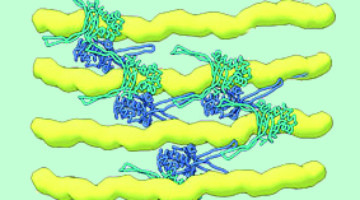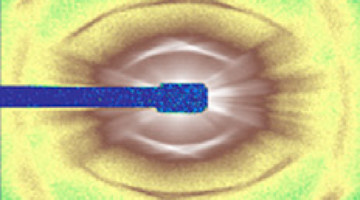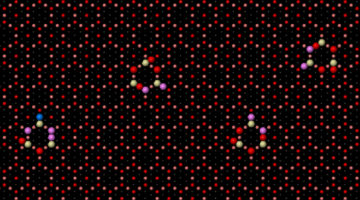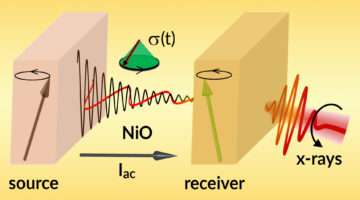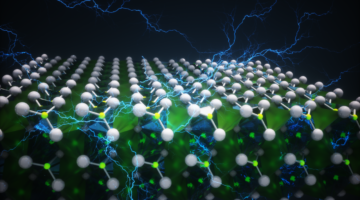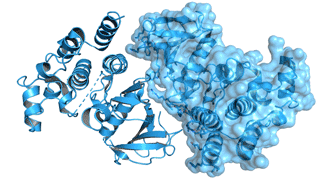Researchers visualized flat band structures associated with exotic electronic phases in stacked graphene layers offset from each other by a “magic angle.” The work corroborates theoretical predictions and has significant implications for phenomena of technological and fundamental interest, such as topological phases and superconductivity. Read more »![]()
![]()
How Proteins Remodel DNA in Bacteria under Stress
Multiscale, multimodal visualization techniques at the ALS enabled researchers to clarify how proteins remodel bacterial DNA in response to stressful environments. The discovery could lead to new strategies for controlling microbial behavior and, eventually, new ways to fight bacterial infections. Read more »![]()
![]()
Toughening Mechanisms in Carp Scales at the Nanoscale
Scientists have characterized carp scales down to the nanoscale, using the ALS to watch how the fibers in the scales react as stress is applied. The resulting insights provide inspiration for the design of advanced synthetic structural materials with unprecedented toughness and penetration resistance. Read more »![]()
![]()
How Water Promotes Catalysis of Methane to Methanol
Researchers unraveled how water helps catalyze the conversion of methane, the main component of natural gas, into methanol, a liquid fuel. The work supports the efficient production of methanol and other useful chemicals and could help reduce the amount of greenhouse gases released by the flaring and venting of methane. Read more »![]()
![]()
Antiferromagnet Transmits Coherent Spin Waves
Researchers discovered how pure spin currents (also known as spin waves) can be efficiently and coherently transmitted through an electrically insulating antiferromagnetic material. The work represents a notable milestone in the use of antiferromagnetic materials for low-power spintronic devices at room temperature. Read more »![]()
![]()
Unexpected Rise in Ferroelectricity as Material Thins
Researchers showed that hafnium oxide surprisingly exhibits enhanced ferroelectricity (reversible electric polarization) as it gets thinner. The work shifts the focus of ferroelectric studies from more complex, problematic compounds to a simpler class of materials and opens the door to novel ultrasmall, energy-efficient electronics. Read more »![]()
![]()
On-Off Switch for Regulating Tumor-Cell Growth
The mechanisms that affect the regulation of cell growth in certain tumor cells were revealed by a Genentech study of enzyme structures, conducted in part at the ALS. The work establishes a framework for the rational discovery of new therapeutics to improve upon currently existing treatments for certain cancers. Read more »![]()
![]()
The Bottleneck Step of a Complex Catalytic Reaction
The rate-limiting step in catalysis involving oxygen uptake was identified through analysis of the reaction pathways and observations performed under operating conditions. The work lays the foundation for improving the efficiency of energy conversion and storage devices such as fuel cells, catalytic reactors, and batteries. Read more »![]()
![]()
A Scalable Platform for Two-Dimensional Metals
Using a new method for stabilizing a two-dimensional (2D) metal on a large-area platform, researchers probed the origins of the material’s superconductivity. The work represents a notable milestone in advancing 2D materials toward broad applications in topological computing, advanced optics, and molecular sensing. Read more »![]()
![]()
Direct Imaging of Fracture Closure in Reservoir Shales
Using x-ray microtomography at the ALS, researchers identified and characterized the microscale factors affecting fluid flow through shale fractures propped open with sand or ceramic spheres. A better understanding of propped fractures can lead to safer and more efficient recovery of hard-to-reach oil and gas resources. Read more »![]()
![]()
- « Previous Page
- 1
- …
- 7
- 8
- 9
- 10
- 11
- …
- 13
- Next Page »

